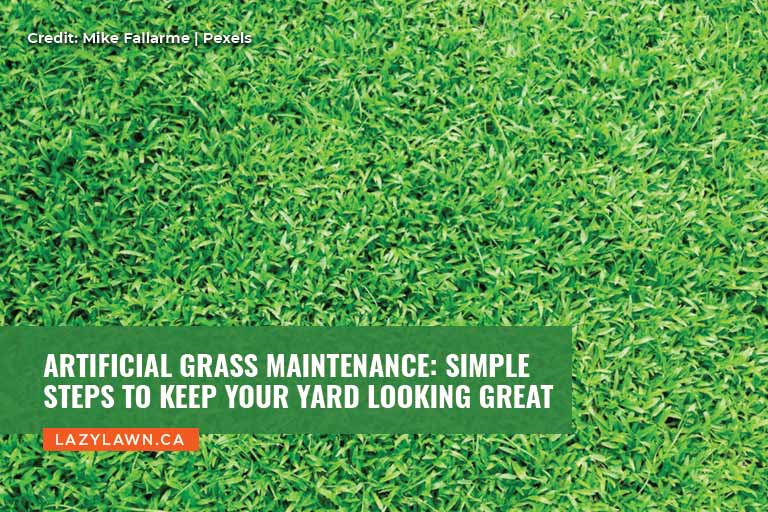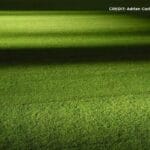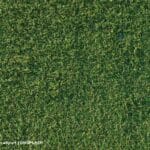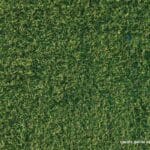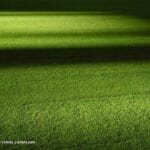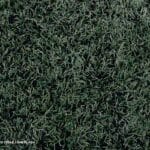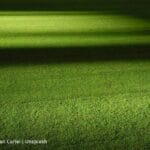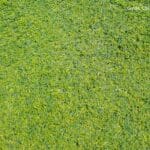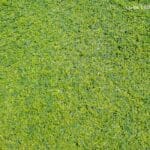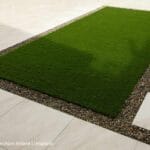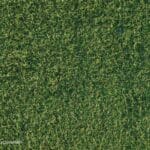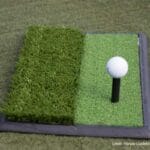Artificial grass has become an increasingly popular alternative to natural grass, offering homeowners a low-maintenance option that looks great year-round. However, there’s more to making optimal use of your synthetic turf than finding the right grass to match your home and installing it properly. Although synthetic turf requires significantly less upkeep than traditional lawns, it’s not completely maintenance-free. Regular care and attention will ensure your artificial grass remains vibrant, clean, and beautiful. In this article, we’ll take a look at some simple steps to maintain your artificial grass, and help you keep your yard looking its best.
1. Regular Brushing to Prevent Matting
Artificial grass can flatten and lose its fresh, upright appearance over time due to foot traffic, weather, and heavy objects like outdoor furniture. One of the easiest ways to combat this is by brushing the grass regularly. A stiff-bristled brush, such as a broom or a grass rake designed for artificial lawns, will help lift the blades back up, preventing them from matting.
Brushing is especially important in high-traffic areas such as walkways, around patio furniture, and near entrances. By brushing in different directions, you ensure the blades don’t develop a repetitive pattern, keeping your grass looking natural and healthy.
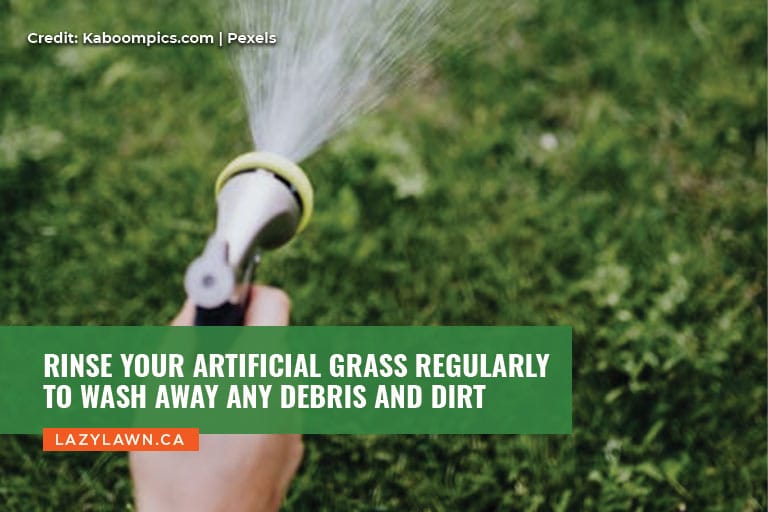
2. Rinse Regularly to Keep It Clean
While artificial grass doesn’t require watering to stay green, it does benefit from regular rinsing. Dust, pollen, and dirt can accumulate on the surface, especially if you live in a dry or dusty area. Giving your lawn a light rinse with a garden hose every few weeks will help remove debris and freshen up its appearance.
For households with pets, rinsing is even more crucial. Artificial grass is permeable, allowing liquid waste to drain away, but solid waste needs to be removed manually. After picking up pet waste, rinse the area to prevent odours and keep the lawn hygienic. There are also pet-friendly artificial grass cleaners available that you can use to ensure a deeper clean when needed.
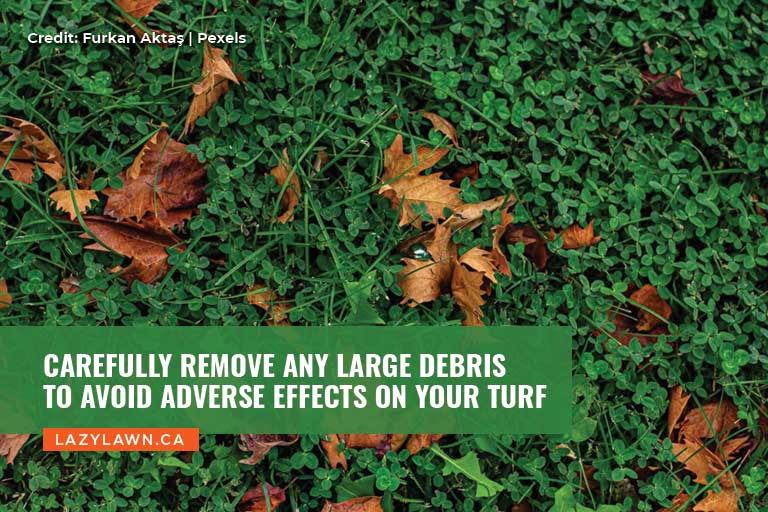
3. Remove Debris Regularly
Leaves, twigs, and other garden debris can accumulate on your artificial grass, particularly during autumn or after a storm. While these won’t damage the turf, allowing them to sit for too long can cause the fibres to become compacted or even encourage weed growth in the infill material.
The best way to keep your artificial grass debris-free is by using a leaf blower or a garden vacuum. These tools are effective and gentle on the turf. You can also use a soft-bristled broom to sweep away debris manually if you don’t have access to a blower. Doing this once a week will prevent build-up and keep your lawn looking clean and tidy.
4. Dealing with Stains and Spills
One of the great advantages of artificial grass is that it’s highly resistant to stains. However, accidents happen, and spills from food, drinks, or other substances can occur, especially during outdoor gatherings. It’s important to deal with spills as quickly as possible to avoid discolouration or attracting insects.
For most spills, all you need is some warm soapy water and a cloth. Simply blot the area to lift the spill, taking care not to scrub too hard as this could damage the fibres. For more stubborn substances like grease or oil, mild household cleaners or artificial grass cleaning products can be used. Always follow the manufacturer’s instructions when using any cleaning agents.
5. Controlling Weeds and Moss
Artificial grass is designed with a weed-resistant membrane underneath, but that doesn’t make it completely immune to weeds. Over time, seeds can blow in and take root in the infill material or around the edges of your lawn. Moss can also become an issue in damp or shaded areas.
To prevent weeds and moss from spoiling the appearance of your artificial grass, apply a weed-killer or moss control solution a few times a year. Be sure to use products that are safe for synthetic turf, as some chemicals can damage the material. Alternatively, manually remove any weeds or moss as soon as you spot them, pulling out the roots to prevent regrowth.
6. Addressing High-Traffic Areas
High-traffic areas are more susceptible to wear and tear, so they require a little extra attention. Pathways, entrances, and places where outdoor furniture is frequently moved can cause the grass fibres to become flattened over time. In addition to brushing these areas regularly, you may want to rotate your furniture or lay down stepping stones or mats to minimise the impact on the grass.
If certain spots on your artificial lawn are receiving excessive wear, it’s also worth considering adding more infill to the affected area. Infill helps support the grass fibres, keeping them upright and providing a more natural feel underfoot.
7. Cleaning Up Pet Waste
Artificial grass is a great option for pet owners because it’s easy to clean and doesn’t develop brown patches like natural grass. If you have pets yourself, it’s a good idea to invest in pet-friendly options like dog-friendly artificial turf for the sake of your furbabies. However, you’ll need to stay on top of cleaning up pet waste to maintain hygiene and prevent odours.
For solid waste, simply scoop it up as you would on a regular lawn, and then rinse the area with water. For liquid waste, rinse the spot thoroughly with a hose to prevent any build-up. As mentioned earlier, you can use a pet-friendly artificial grass cleaner for a deeper clean. These products help neutralise any odours and are safe for both your pets and your lawn.
8. Keep Your Lawn Free from Sharp Objects
Although artificial grass is designed to be durable, it can still be punctured or damaged by sharp objects. Be mindful of tools, garden equipment, or heavy furniture with sharp legs or edges that could tear the surface. When setting up outdoor furniture or decorations, check that the base is smooth or cushioned to prevent any damage to the turf.
If you do notice a tear or puncture in your artificial grass, it’s best to repair it as soon as possible. Small repairs can often be done with adhesive patches or by contacting a professional for a quick fix, ensuring the damage doesn’t spread.
9. Check the Infill Periodically
The infill in artificial grass plays a vital role in keeping the blades standing upright and providing cushioning underfoot. Over time, the infill material can become compacted or displaced, particularly in high-traffic areas. It’s a good idea to check the infill levels periodically and top them up as needed to maintain the softness and resilience of your lawn.
There are different types of infill available, including sand and rubber granules, so be sure to use the type recommended by your grass manufacturer. Topping up the infill will not only enhance the appearance of your lawn but also prolong its lifespan.
10. Prepare for Winter
It’s always a good idea to know what to expect when the seasons change. During the colder months, artificial grass requires minimal maintenance. However, there are a few things you can do to ensure it stays in top condition throughout the winter. If you experience snowfall, avoid using sharp tools or shovels to clear the snow, as these can damage the turf. Instead, use a plastic snow shovel or a stiff broom to gently remove the snow.
If frost forms on the grass, it’s best to let it melt naturally. Walking on frosty artificial grass can cause the fibres to break or become dislodged. In extremely cold conditions, occasional brushing can help keep the grass looking fresh.
—
Maintaining your artificial grass is relatively simple, especially compared to the demands of a natural lawn. By following these straightforward steps, you can keep your yard looking great throughout the year. Regular care helps preserve the appearance and longevity of your artificial grass. With a little routine care, your synthetic lawn will remain vibrant, clean, and a joy to enjoy.
When it comes to finding synthetic turf that looks and feels like natural grass, Lazy Lawn is here to help. We provide a wide range of artificial grass options to help you find the right turf to match your home. If you’re looking for a helping hand finding the right synthetic turf to boost your home’s curb appeal, we’re here to help. Give us a call now at (888) 622-5296 to find the right synthetic turf to make your home that much more appealing.

